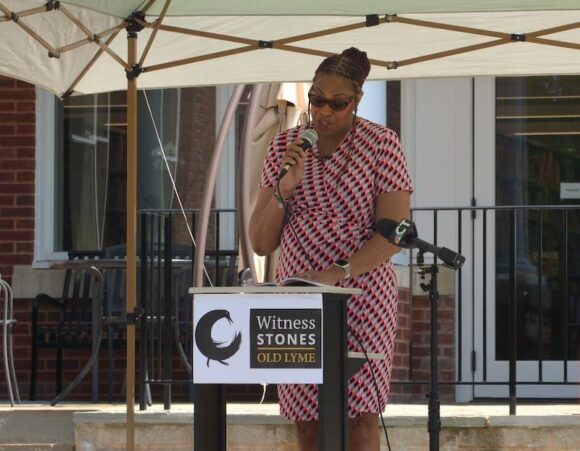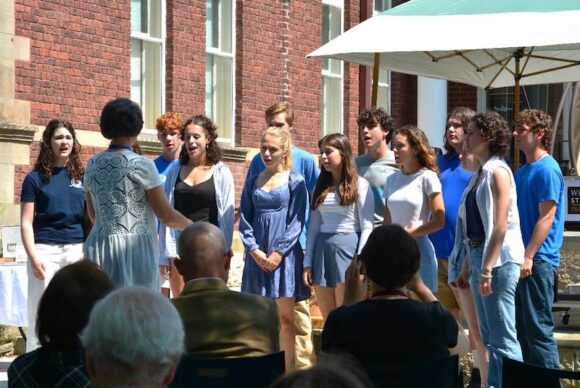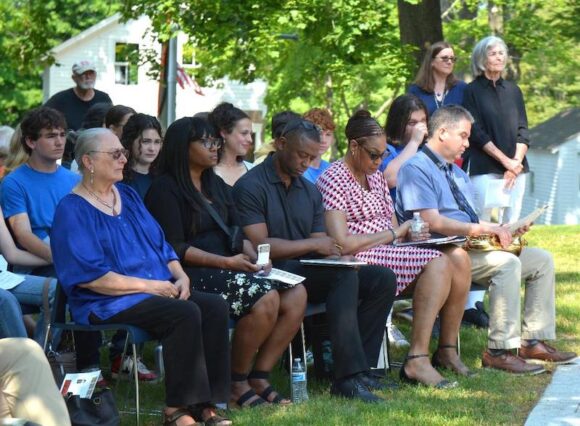
OLD LYME — On June 2, a large audience, along with musicians, singers, genealogists, poets, and descendants, gathered on the lawn of the Phoebe Griffin Noyes Library to honor the lives of enslaved persons who lived in Old Lyme.
The Old Lyme Witness Stones Project, with the support of its many local partners, recently installed new historical plaques on a grassy triangle on Old Shore Road. The plaques detail the names and stories of eight enslaved African-Americans and indentured Indigenous people, who lived and labored in the Black Hall section of the historic town of Lyme in the 17th and 18th centuries.

These new brass plaques, four inches square and set flush to the ground, join 30 plaques that have been installed over the past two years on Lyme Street and in front of the Duck River Cemetery on McCurdy Road.


Carolyn Wakeman, an historian and organizer of the project noted: “This is a tangled story in which families of the enslaved and the enslavers intertwined, but the circumstances of those enslaved . . . allow us today to discern the contours of northern slavery.”
A postcard/map is available at the Town Hall, the Library, the Florence Griswold Museum, the First Congregational Church, and on the Witness Stones Old Lyme website https://www.witnessstonesoldlyme.org/.
Between 1670 and 1826, over 250 enslaved African-Americans and indentured Indigenous people labored in what are now the towns of Lyme and Old Lyme, and parts of East Lyme and Salem. They were young and old, male and female, parents and children. Some died as slaves, some were given freedom; some were soldiers, sailors, soap makers, runaways, fiddlers, and farmers.
The project will be completed over the next two years with a total of 50 plaques installed in Lyme and Old Lyme.
An interpretive sign on the lawn of the Old Lyme Phoebe Griffin Noyes Library marks the Witness Stone trail.
The commemorative plaques in Black Hall, placed together in a group, expand the power of an individual story.